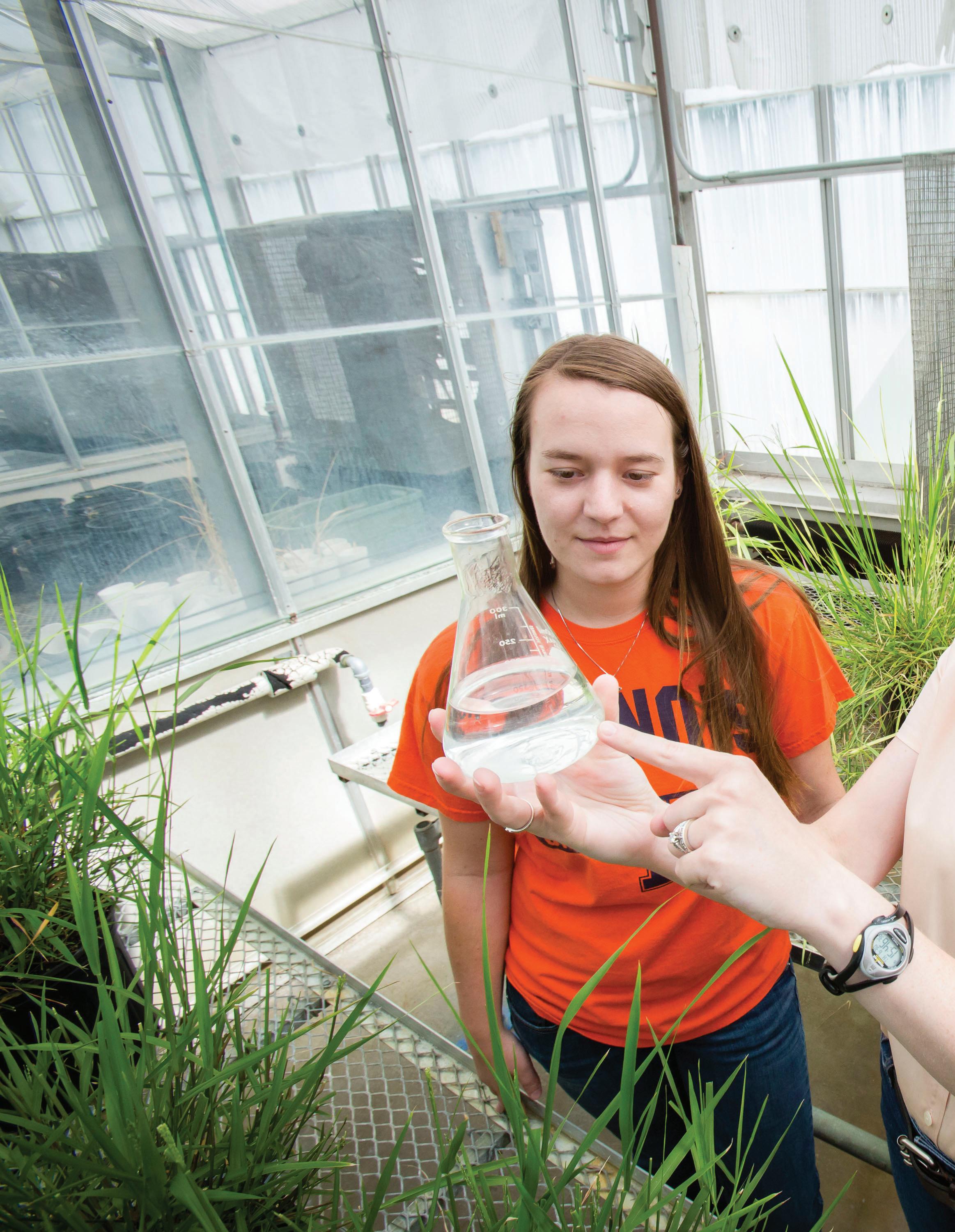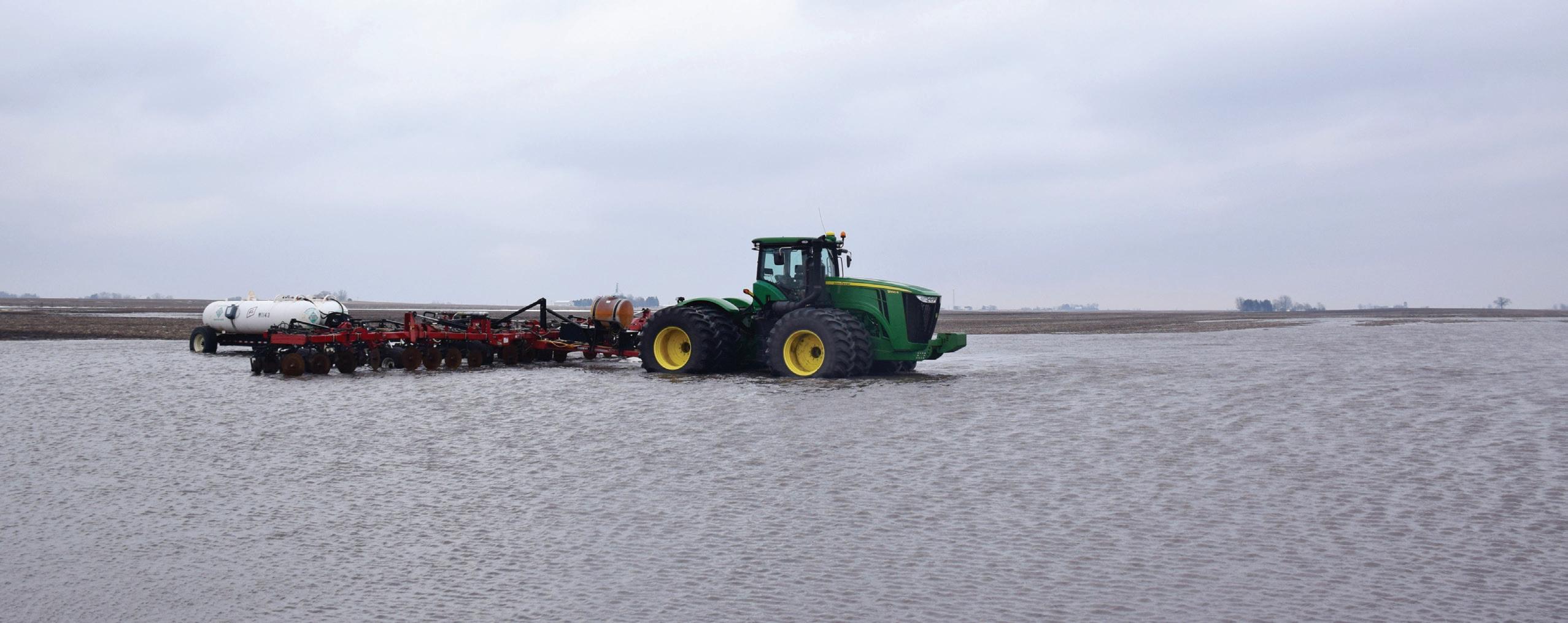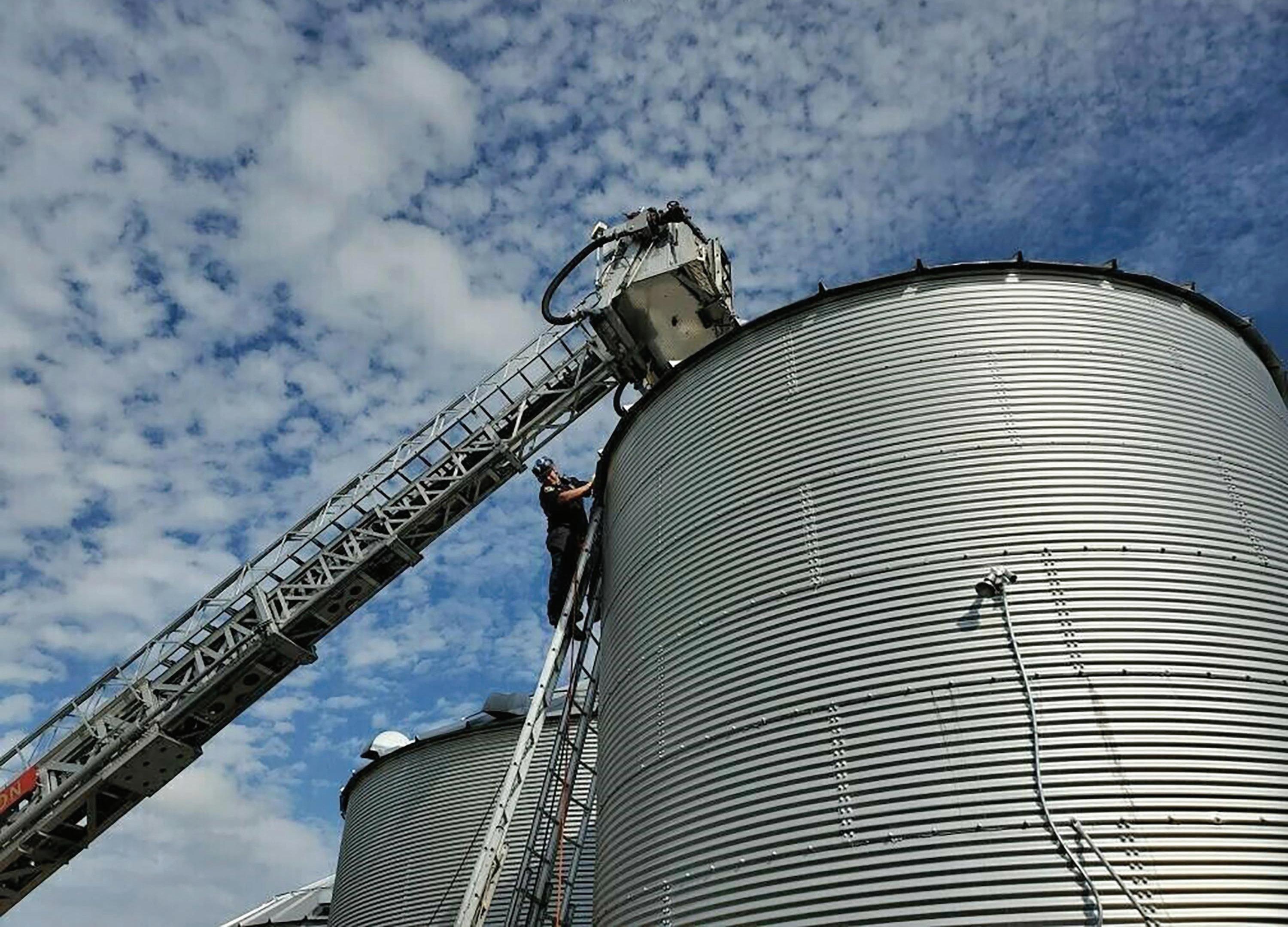Northern Illinois just faced three consecutive wet years – the Chicago area recorded the wettest Mays on record in 2018, 2019 and 2020.
A tractor sits in a flooded field near Leland in spring 2019. Shaw Media file photo
LOWER RISK OF
SPRING FLOODING By MARTHA BLUM AgriNews Publications
“The top and subsoil moisture is below to near average, so there is a lot of capacity to take in precipitation in the winter and spring.” TRENT FORD Illinois state climatologist
IN NORTHERN ILLINOIS THIS YEAR
SOMONAUK — The potential for flooding in northern Illinois during the spring is much lower as compared to the last two years. “The top and subsoil moisture is below to near average, so there is a lot of capacity to take in precipitation in the winter and spring,” said Trent Ford, Illinois state climatologist based the Illinois State Water Survey, part of the Prairie Research Institute at the University of Illinois. “We have come off three wet years, and we had a dry fall,” said Mark Tuttle, who farms with his two sons near Somonauk. “We’ve had some snowfall and the rivers are down, so I’m concerned about the subsoil moisture, but there’s plenty of time for that to happen.” Farmers prefer a drier planting season to get the crop in the ground and established. “I think we’re looking for a great year, if we can get the crop in the ground on time,” said the president of DeKalb County Farm Bureau. “I’m very optimistic for the ag economy because prices are up, so we have a chance to forward contract and lock in some profit.” Tuttle plants corn, soybeans and wheat and has a small cow herd. “We’re up to 80 acres of wheat this year, which is the most we’ve ever grown,” he said. “Wheat works for us for erosion as a great cover crop in the winter, and when we have spring rains, we’ve got something on our hills.” Typically, Tuttle divides his acres into 40% corn, 40% soybeans and 20% wheat. “If we have a late spring, we might plant more beans,” he said. “I planted corn on June
2 two years ago — and I’m not going to do that again.” Tuttle will plant corn up until Memorial Day. “After that, we’re going to do something else,” he said. “This year, I will plant my 41st crop.”
RAIN, RAIN AND MORE RAIN
Precipitation from April 2019 to March 2020 in northern Illinois was the wettest on record, said Ford during a presentation at CropFlix, the 2021 Crop Management Conference. “We came into March 2020 with soils at or near saturation, streams were at bank full or above and overall there was a pretty significant risk of flooding.” For both 2019 and 2020, the first three months of the year were wetter than average. “From April 1 to May 31, we began to see some differences,” Ford said. “The only area that was nearly as wet in 2020 as it was in 2019 was the Chicagoland area, and the rest of the area was 3 to 6 inches drier, which made a large difference in the extent of the flooding issues and planting delays.” There was also a difference in how frequently the precipitation fell between the two years. “In 2019, from April 1 to May 31, Chicago’s O’Hare Airport reported 20 days with a least one-quarter of an inch of rain, so there was not a whole lot of time between rains events to let the fields dry down and get fieldwork done,” Ford said. “In 2020, the rain was less than half that, so there were periods where conditions were dry enough and temperatures were warm enough for planting.”
10 | DeKalb County AG MAG | Spring 2021
DDC_AgMag_032621.indd 10
2/25/21 4:06 PM




